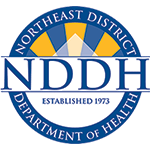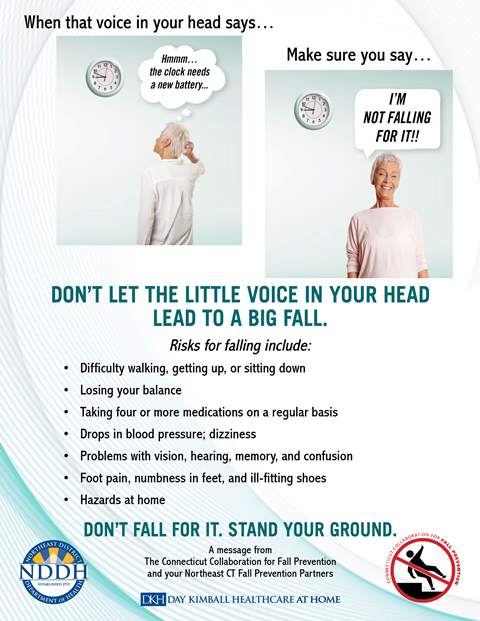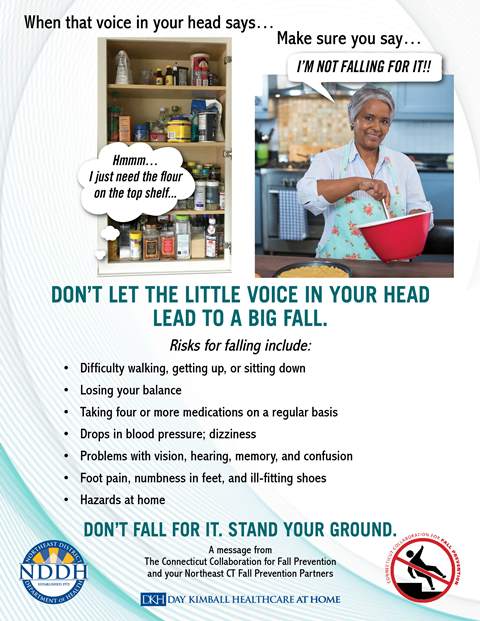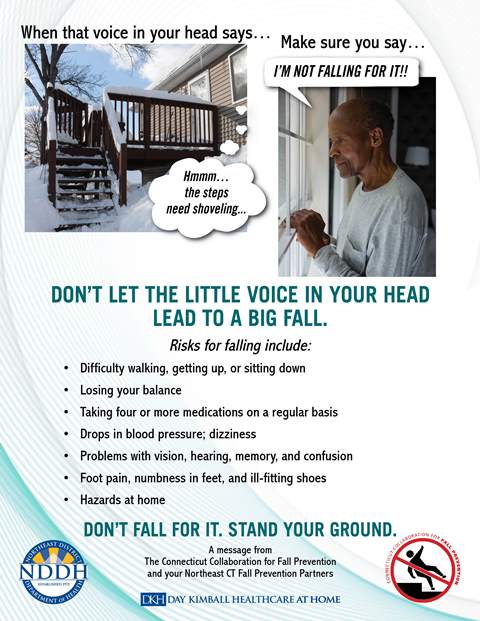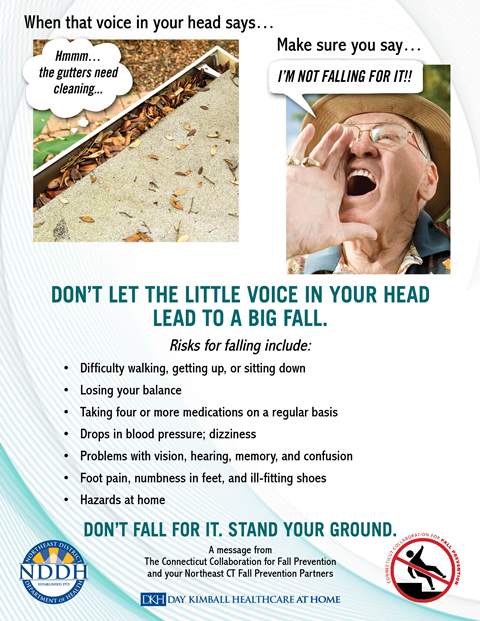Fall Prevention
I’m Not Falling for It Campaign
NDDH developed a successful fall prevention campaign thanks to funding from the Connecticut Collaboration for Fall Prevention (CCFP). When that voice in your head tempts you with an activity that puts you at risk for falling, stand your ground and say…”I’M NOT FALLING FOR IT!”
Our Fall Prevention Program will keep you on your toes.
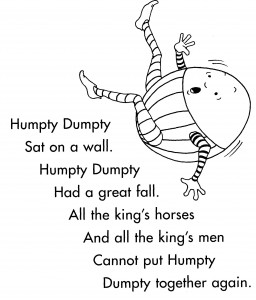 London Bridge isn’t the Only Thing Falling Down: Getting to the Rhyme and Reason Behind Falls
London Bridge isn’t the Only Thing Falling Down: Getting to the Rhyme and Reason Behind Falls
Why are tumbles, trips, and falls the basis for so many nursery rhymes? Mother Goose has issued warnings for some 300 years and we have yet to heed her poetic advisories. Consider Humpty Dumpty, Jack, Jill, the Rock-a-bye Baby, and the old man snoring who went to bed and bumped his head…now imagine them convalescing from broken hips, concussions, and traumatic brain injuries (TBI) – today’s “broken crown.” Broken hips and TBIs are the most common injuries sustained in falls. Only half of those injured will regain their pre-fracture strength.
“As we age, we are continuously challenged to defy gravity,” says Dr. Dorothy Baker, PhD, former Director of the Connecticut Collaboration for Fall Prevention (CCFP) at Yale University School of Medicine. “What makes us vulnerable to gravity is the fact that certain systems of our bodies are not working at peak performance. Many people have been weakened by unhealthy lifestyles, chronic disease, illness, and injury. We have to de-emphasize the environment as the reason why we fall and instead focus on how we can better interact with the environment in order to stay on our feet.”
To reduce your risk:
- Have your health care provider review your medicines. Taking four or more medications daily (including over the counter meds) puts you at greater risk;
- Get checked for postural hypotension. A drop in blood pressure when standing up can cause dizziness and lead to falling;
- Have your vision and hearing assessed annually, and consult a podiatrist for foot pain;
- Exercise regularly to improve your health and strengthen the abdominal core muscles that keep you vertical;
- Maintain your water balance by taking sips of water and going to the bathroom regularly;
- Make your home safer by reducing fall hazards.
“Please don’t ignore the gravity of any situation,” says Baker. “It’s never too early and never too late to reduce your risk of falling.”

This just in from Mother Goose:
“Too many people are taking big falls
Landing in nursing homes once and for all
It’s a matter of ‘if,’ or a matter of ‘when…’
Will you be the one we can’t put together again?!”
